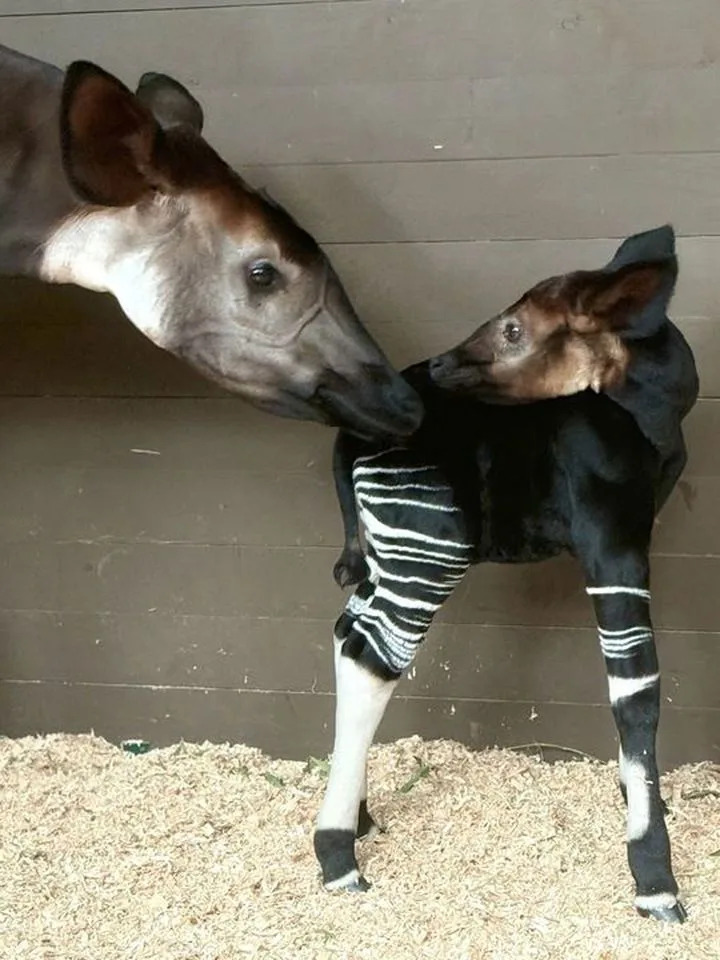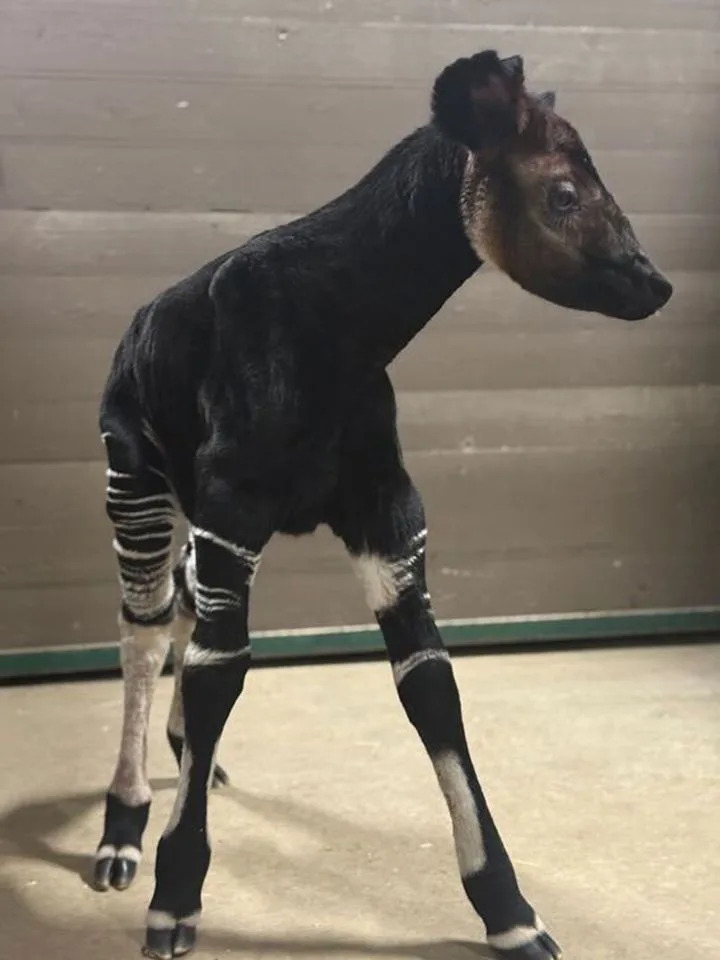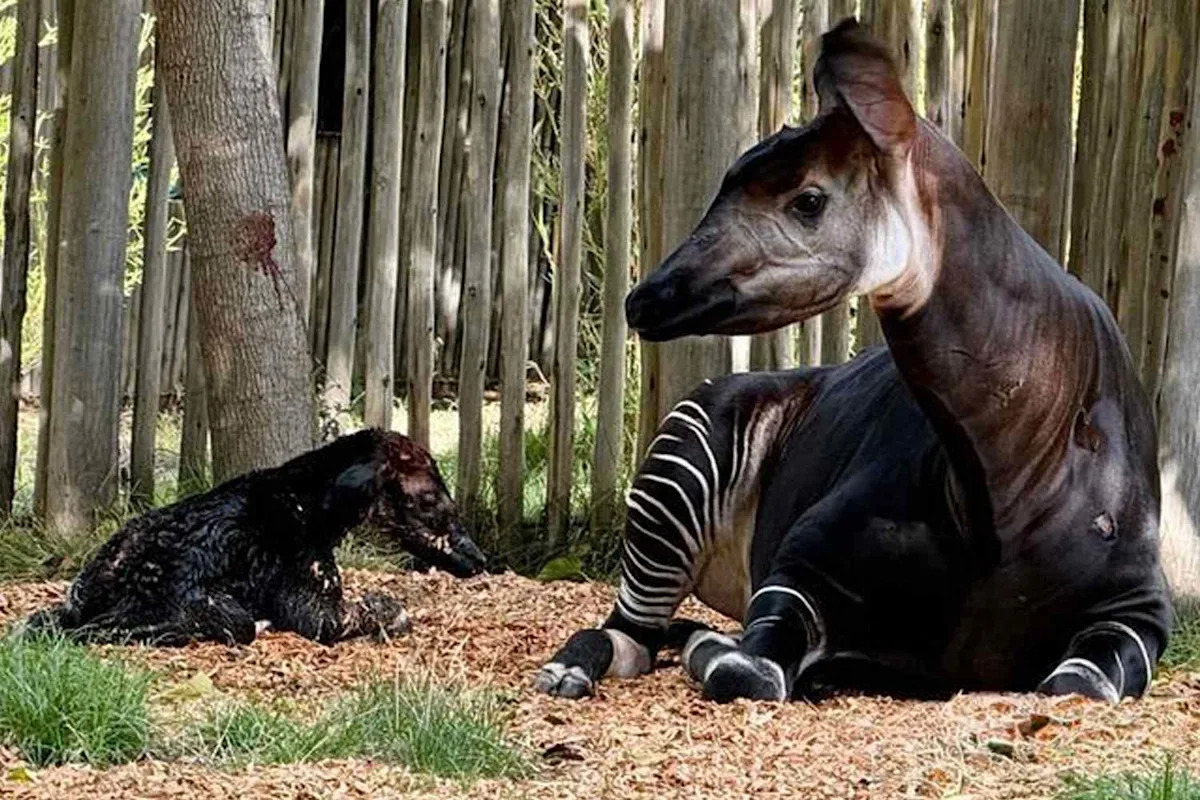NEED TO KNOW
The Sacramento Zoo is celebrating the first okapi birth in its nearly 100-year history
The zoo announced on Oct. 13 that a male okapi calf made his arrival on Oct. 9
Okapi, an endangered species, are the only living relative of giraffes
The Sacramento Zoo is celebrating a special milestone.
The zoo, founded in 1927, had the very first okapi birth in its nearly 100-year history, per a news release shared on Facebook on Oct. 13. The California facility said female okapi Kivuli delivered a still-to-be-named male calf on Oct. 9.
“Kivuli and the calf are healthy,” the zoo said. “The pair will be off-exhibit and not visible to the public for the next few weeks, to give both mom and calf time to adjust.”
The zoo’s animal care team and veterinary staff will be closely monitoring the pair during this period, and limited human interaction is “essential” at this time, the facility said in the release.
Some visitors had a chance to see the historic birth unfold as guests had a partial view in the side yard of the okapi habitat next to the okapi barn, officials said, per The Sacramento Bee.

Sacramento Zoo/Facebook
Mom Kivuli bonds with her newborn calf at the Sacramento Zoo
Photos captured after the birth show the calf already standing and bonding with his mother.
Okapi, also known as “forest giraffes,” look like “a cross between a deer and a zebra,” per National Geographic. The giraffe’s only living relative, okapi are native to the Ituri Rainforest in the Democratic Republic of Congo.
According to the Sacramento Zoo’s release, they are an endangered species, with an estimated wild population of between 10,000 and 15,000.

Sacramento Zoo/Facebook
Male okapi calf, born at the Sacramento Zoo on Oct. 9
Due to this, the zoo said, “this birth is not just an important milestone for the Sacramento Zoo, but a key contribution to AZA [Association of Zoos & Aquariums]’s SSP [Species Survival Plan] and global conservation.”
Within AZA, there are fewer than 100 okapi across 30 institutions.
“This successful birth reflects teamwork across our animal care team, veterinary staff, facilities staff, horticulture team, nutrition, development and leadership,” the Sacramento Zoo said.
Never miss a story — sign up for PEOPLE’s free daily newsletter to stay up-to-date on the best of what PEOPLE has to offer, from celebrity news to compelling human interest stories.
Okapi have thick, oily fur to help them stay dry in the rain, per National Geographic. They can “blend into their natural surroundings thanks to the brown and white stripes on [their] rump, which mimic the appearance of streaks of sunlight coming through the trees.”
The species eats a plant-based diet, consisting of fruits, buds, leaves, twigs and other vegetation, and — like giraffes and cows — has four stomachs that help with digesting tough plant foods. Like their giraffe cousins, okapi have a long tongue used for stripping leaves from trees, according to National Geographic.
Read the original article on People

